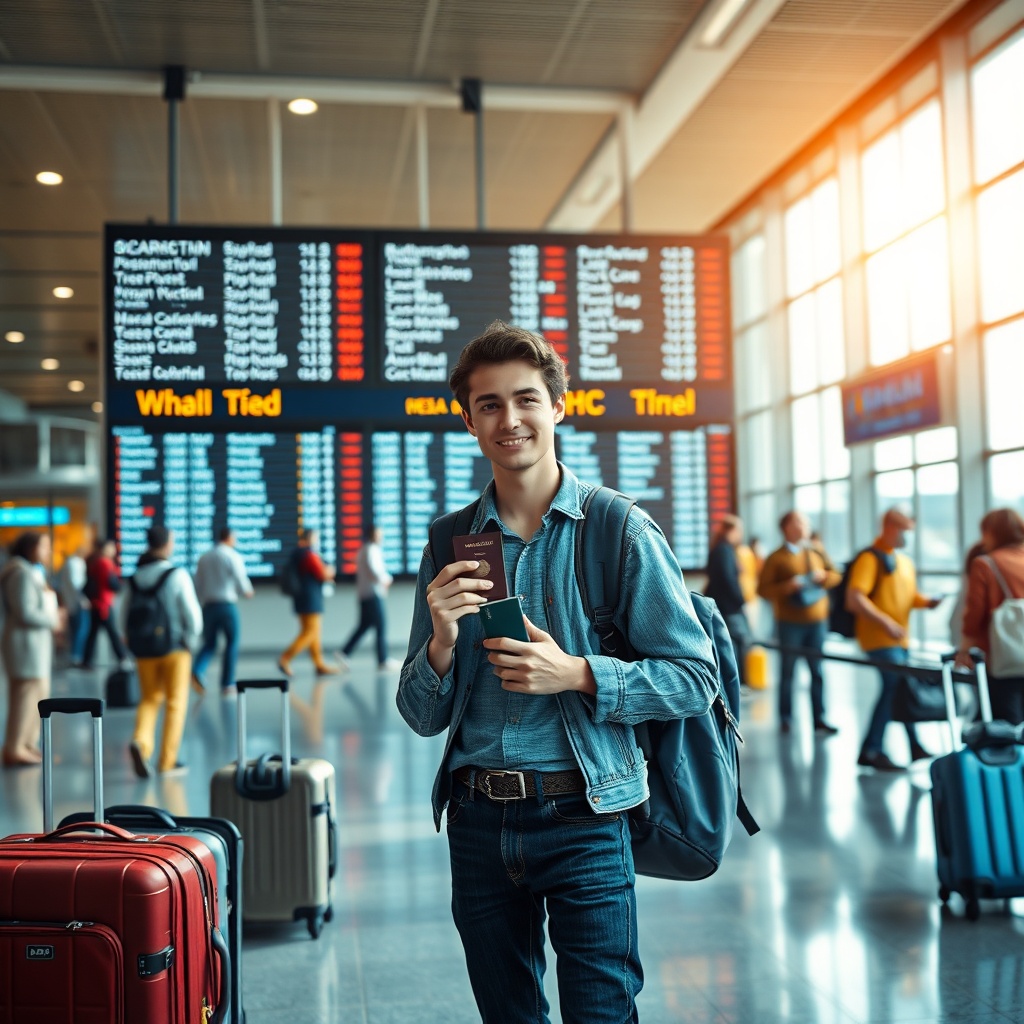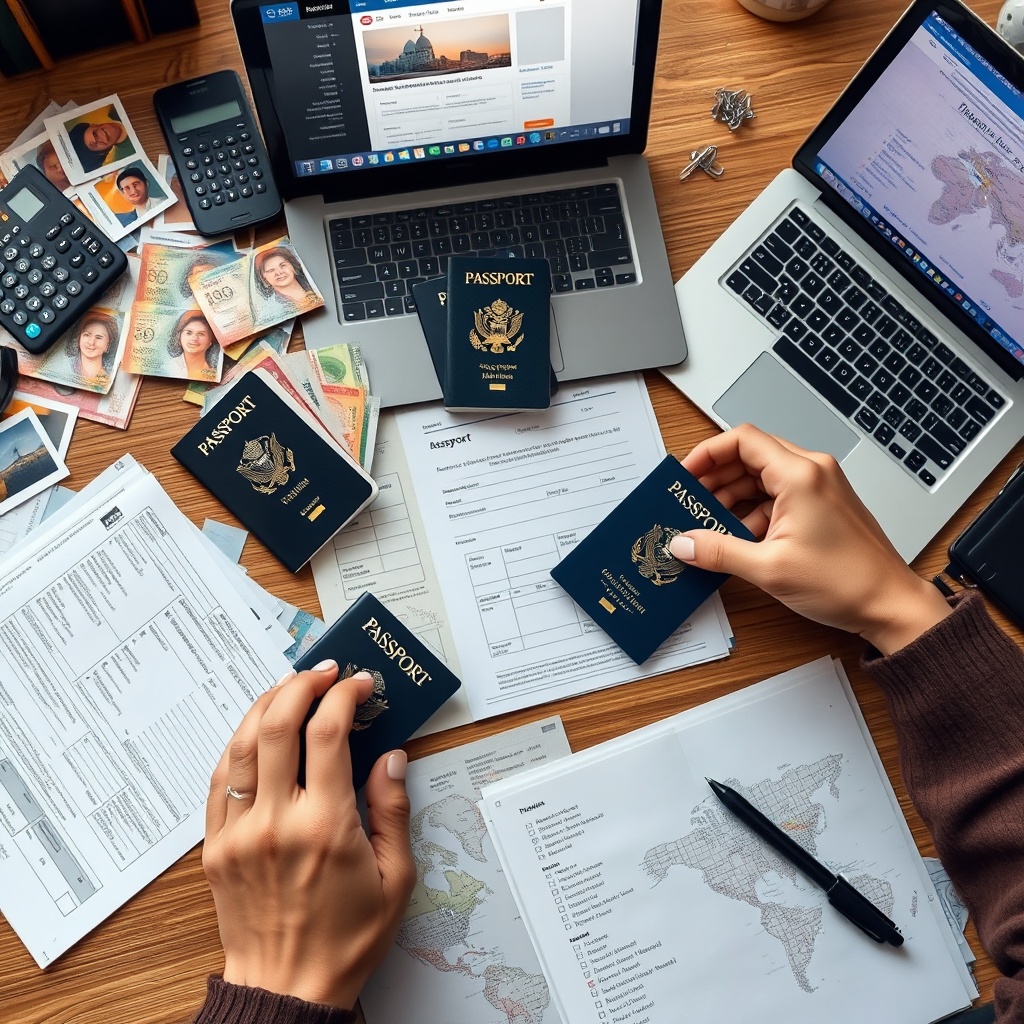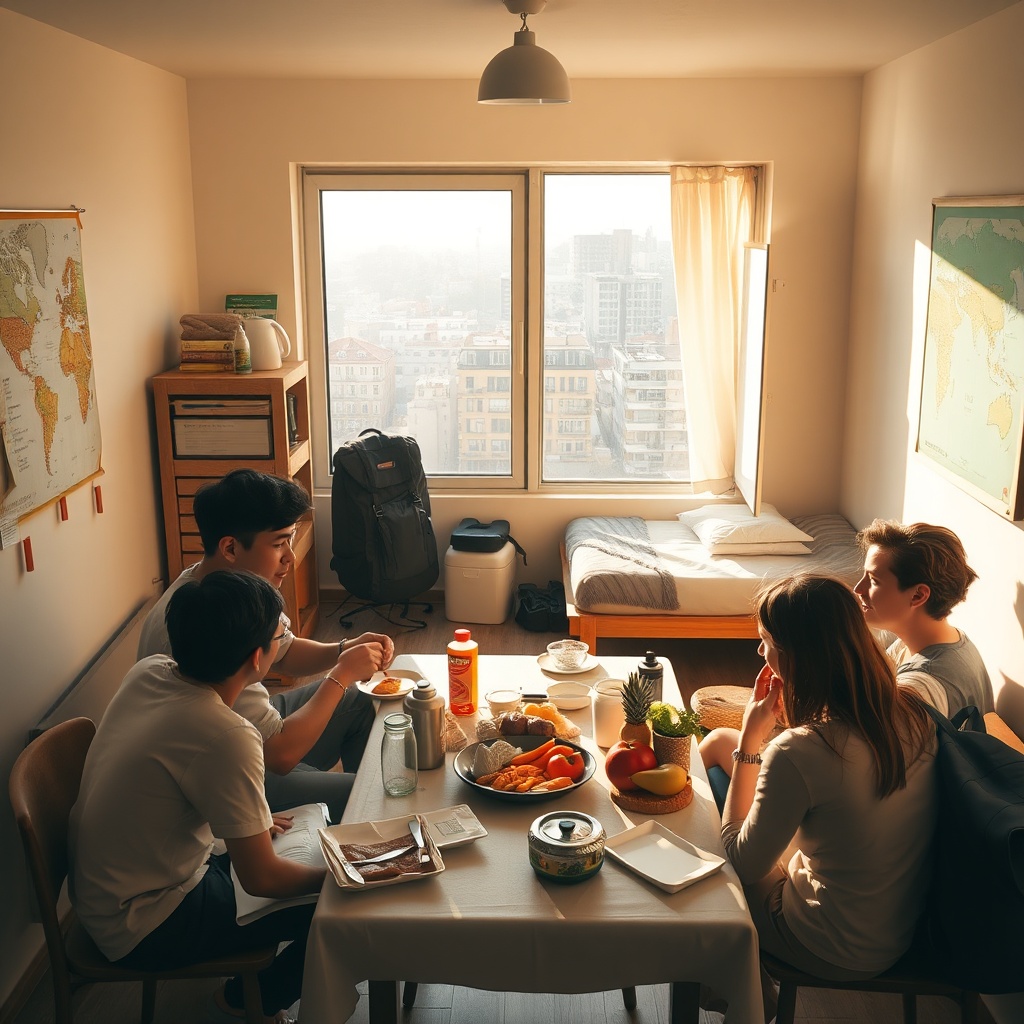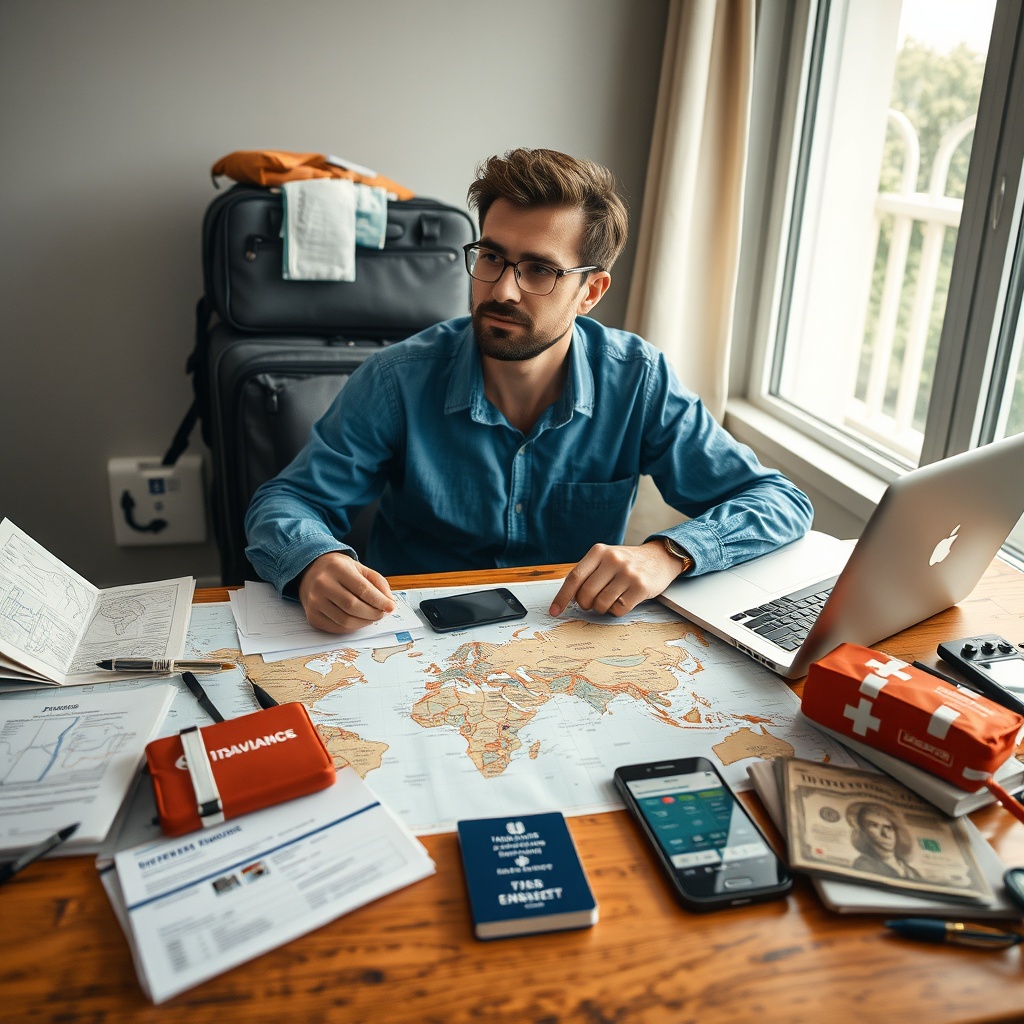Around the World Preparation Cost Summary: From Tickets to Living Costs
Ever wondered what it truly costs to travel around the world? Not just flight tickets, but every hidden expense — visas, travel insurance, accommodations, even that first plate of street food you’ll crave in a midnight market. Planning a global adventure is more than stuffing a backpack and boarding a plane; it's a journey of discovery, budgeting, sacrifice, and joy. In this guide, I’ll walk you through the real, up-to-date numbers, fresh from this week’s research, so you can build your dream trip with open eyes and a steady budget. Whether you’re a gap year dreamer or an adult finally chasing the horizon, let’s decode the financial map of the world — and help you step boldly into the adventure of your lifetime. Curious? Keep reading. You might be surprised where your money really goes, and how much magic you can afford!

Embarking on an around-the-world journey is an adventure that starts long before you board your first plane. The initial stage—securing your flight and transportation tickets—is often the most significant leap, both financially and emotionally.
Let’s break down this crucial step using the traditional storytelling arc, following Harmon's Law:
- The Setup: You dream of exploring the world, and the first concrete action is researching flights and transportation options. Here, you’ll discover the vast range of costs and routes, from round-the-world (RTW) tickets to budget airlines and trains.
- The Call to Adventure: You start comparing ticket prices, considering whether to buy a flexible RTW ticket or book one-way segments. This stage is about balancing budget, flexibility, and your travel style.
- Crossing the Threshold: The moment you purchase your first major ticket, the journey becomes real. This is often a moment of excitement and anxiety—will you get the best deal? Did you choose the right route?
- Trials and Tribulations: As you continue planning, you encounter fluctuating prices, hidden fees, and the complexity of visas and layovers. You learn to use flight comparison tools, track price alerts, and maybe even master the art of travel hacking with points and miles.
- Meeting the Mentor: Online communities, travel blogs, and seasoned travelers offer advice. You discover tips like booking mid-week flights, using incognito mode, and leveraging stopovers to save money and see more places.
- The Ordeal: There may be setbacks—missed deals, sudden price hikes, or confusing airline policies. But each challenge sharpens your planning skills and builds your confidence.
- The Reward: Finally, you secure your tickets at a price that fits your budget and itinerary. This achievement marks the true beginning of your adventure and provides a sense of accomplishment.
- The Return: With tickets in hand, you can now focus on the next stages: accommodation, daily expenses, and immersing yourself in new cultures. The leap into the unknown has been made, and you’re officially on your way.
Key Insights for Travelers:
- Start your research early—ticket prices fluctuate, and early birds often get the best deals.
- Compare RTW tickets versus individual segments; sometimes a mix of both yields the lowest cost.
- Factor in all transportation: not just flights, but also trains, buses, and ferries between destinations.
- Use tools like Google Flights, Skyscanner, and Hopper to monitor prices and set alerts.
- Be flexible with dates and destinations to maximize savings.
| Ticket Type | Estimated Cost (USD) | Pros | Cons |
|---|---|---|---|
| RTW Ticket | $2,500 - $6,000 | Convenient, flexible, multi-stop | Restrictions, must plan ahead |
| One-way Flights | $1,800 - $5,000 (total) | Flexible, can chase deals | Time-consuming, price fluctuations |
| Regional Passes (Rail/Bus) | $200 - $1,000 | Cost-effective, scenic | Limited to certain regions |
Investing time and energy into your flight and transportation planning pays off. It sets the tone for your entire journey, impacts your budget, and shapes your experience. Remember, the first big leap is always the hardest—but it’s also the most rewarding.
Keywords: flight tickets, transportation costs, round-the-world, travel planning, budget travel

When planning an around-the-world journey, most travelers focus on the obvious expenses: airfare, accommodation, and daily living costs. However, visa and documentation fees often lurk in the background, quietly adding up and sometimes catching even seasoned travelers off guard.
Let's break down why understanding these hidden costs is essential, and how you can prepare for them smartly, ensuring your global adventure is as smooth as possible.
Each country has its own visa requirements, and the fees can vary dramatically. For example, a tourist visa for Vietnam may cost as little as $25, while a working holiday visa for Australia can exceed $400. Multiply this by the number of countries on your itinerary, and you could be looking at a significant chunk of your travel budget.
Besides the visa application fee, there are often additional charges: processing fees, courier services, notary fees, and sometimes even translation costs. For long-term travelers or digital nomads, documents like international driving permits, health certificates, or proof of onward travel can also incur costs.
Failing to budget for visa fees can disrupt your plans. Imagine arriving at a border only to realize you don't have the right paperwork or enough cash for an unexpected fee. This can mean missed flights, extra nights in hotels, or even denied entry.
On the flip side, being prepared gives you flexibility and peace of mind. It allows you to make spontaneous detours, apply for last-minute visas, or extend your stay in a country you fall in love with.
- Research Early: Start by listing every country you plan to visit. Check official embassy websites for up-to-date visa requirements and fees. Don't rely solely on travel blogs, as rules change frequently.
- Factor in All Related Costs: Include not just the visa fee, but also costs for passport photos, postage, express processing, and required documents like bank statements or invitation letters.
- Build a Buffer: Add a 10-20% buffer to your documentation budget. Unexpected costs—like needing a rush visa or a surprise entry tax—are common.
- Track Everything: Use a spreadsheet or travel app to log each fee. This helps you stay organized and spot trends—some regions (like Central Asia or Africa) are notorious for higher or more frequent visa charges.
| Country | Visa Type | Typical Fee (USD) | Extra Documentation |
|---|---|---|---|
| Vietnam | Tourist | $25 | Passport photo, approval letter |
| Australia | Working Holiday | $400+ | Health check, police certificate |
| India | e-Visa | $40-$100 | Digital photo, travel itinerary |
| Russia | Tourist | $50-$160 | Invitation letter, travel insurance |
- Establishing the Ordinary World: You dream of circling the globe, mapping out destinations and calculating flights and hotels, but overlook the fine print of visa costs.
- Call to Adventure: As you research, you discover that some countries require expensive and time-consuming visa applications.
- Refusal of the Call: You consider skipping certain destinations to avoid the hassle and cost, feeling overwhelmed by bureaucracy.
- Meeting the Mentor: A seasoned traveler shares tips on streamlining the process, using checklists, and budgeting for documentation.
- Crossing the Threshold: Armed with new knowledge, you tackle the paperwork, set aside funds, and apply for your first visas.
- Tests, Allies, and Enemies: You face delays, lost documents, and unexpected fees, but online communities and embassy staff help you through.
- Approach to the Inmost Cave: A last-minute change in plans requires a rush visa, testing your preparation and patience.
- Return with the Elixir: You successfully enter each country, grateful for your foresight. You share your wisdom, helping others avoid costly mistakes.
- Visa and documentation fees are a significant, often underestimated part of travel budgeting.
- Preparation and research can save you money, time, and stress.
- Being organized and proactive lets you focus on the joy of discovery, not paperwork headaches.
Remember, every stamp in your passport is worth the effort—and with the right planning, the cost of entry is just another part of your grand adventure.

Setting out on an around-the-world journey is a dream for many, but the reality of accommodation and living expenses can be daunting. Yet, with careful planning and a clear understanding of your options, your "home away from home" can be both comfortable and budget-friendly.
Understanding the Accommodation Spectrum
From luxury hotels to cozy hostels, short-term rentals, and even volunteering stays, the range of accommodation is vast. Your choice will significantly impact your overall travel budget and experience. It's important to align your accommodation style with your travel goals, whether you prioritize comfort, cultural immersion, or cost savings.
- Hostels and Guesthouses: Perfect for solo travelers and those seeking community. Prices can range from $10 to $40 per night depending on the country. Shared kitchens help reduce food costs, and you often gain access to local insights and friendships.
- Short-term Rentals (Airbnb, local apartments): Ideal for longer stays or group travel. Monthly rates are often negotiable, especially off-season. This option provides privacy and the ability to cook your own meals, which is a significant cost saver.
- Hotels: Offer comfort and amenities, but usually at a higher price. Great for short stays or when you need a break from budget travel. Loyalty programs can sometimes offset costs.
- Volunteering and Work Exchanges: Platforms like Workaway or WWOOF allow you to exchange a few hours of work for free accommodation and sometimes meals. This is a fantastic way to extend your travels and immerse yourself in local culture.
Living Expenses: Beyond the Bed
Living costs go far beyond nightly rates. Food, transportation, internet, laundry, and even small daily comforts add up. Here’s a quick breakdown to help you estimate:
| Expense Category | Budget Range (per month) | Tips for Saving |
|---|---|---|
| Accommodation | $300 - $1,500 | Negotiate long-term rates, consider hostels or shared apartments |
| Food | $150 - $600 | Shop at local markets, cook your own meals, try street food |
| Transportation | $50 - $300 | Use public transit, walk, or rent a bike |
| Internet & Phone | $20 - $80 | Buy local SIM cards, use free Wi-Fi in cafes |
| Laundry & Miscellaneous | $20 - $100 | Hand-wash clothes, use hostel facilities |
Storytelling: The Journey of Discovery (Harmon's 8-Stage Story Structure)
- You: You dream of exploring the world, but worry about the cost of living far from home.
- Need: You realize you need a plan to manage accommodation and daily expenses.
- Go: You research options, compare prices, and set a realistic budget.
- Search: On the road, you try different types of stays—hostels, rentals, volunteering.
- Find: You discover that living like a local—shopping at markets, using public transport—saves money and enriches your experience.
- Take: You face challenges: unexpected costs, language barriers, and occasional homesickness.
- Return: With each new place, you adapt, learn, and grow more confident in managing your expenses.
- Change: You return home not only with memories, but with the insight that a "home away from home" is about adaptability, resourcefulness, and openness to new experiences.
Key Insights for Travelers
- Research and book in advance for the best deals, especially in popular destinations.
- Consider off-peak travel for lower accommodation rates.
- Balance comfort and cost by mixing accommodation types.
- Track your expenses with budgeting apps to avoid surprises.
- Embrace local living—it’s often the most affordable and rewarding way to travel.
Ultimately, your "home away from home" is shaped by your choices, flexibility, and willingness to adapt. With smart planning, the world can be both your playground and your sanctuary—without breaking the bank.

Traveling around the world is a dream for many, but it also comes with its share of uncertainties. One of the most crucial steps in your preparation is planning for insurance, unexpected events, and contingencies. This is the stage in your journey where you anticipate the unknown, much like the 'ordeal' phase in Harmon's storytelling circle, preparing for challenges that may arise on the road.
Why Insurance Matters
Comprehensive travel insurance is not just a box to tick; it's your safety net. Whether it's a sudden illness, lost luggage, or a canceled flight, insurance can save you from financial disaster. When choosing a policy, consider these key features:
- Medical Coverage: Covers hospital visits, emergencies, and sometimes even medical evacuation.
- Trip Cancellation: Reimburses you if you have to cancel or cut short your trip due to unforeseen events.
- Lost or Stolen Belongings: Offers compensation for lost baggage or valuables.
- Adventure Activities: If you plan on hiking, diving, or extreme sports, make sure your policy covers these.
Budgeting for the Unexpected
Even with the best insurance, not everything can be predicted. Here are practical steps to help you prepare:
- Set aside an emergency fund—ideally 10-20% of your total travel budget. This gives you flexibility if plans change or emergencies arise.
- Keep copies of important documents (passport, insurance, visas) both digitally and physically.
- Have backup credit/debit cards and a small amount of cash in a separate location.
- Familiarize yourself with local emergency numbers and embassy contacts in each country.
| Contingency | Estimated Cost | Preparation Tip |
|---|---|---|
| Medical Emergency | $500 - $5,000+ | Get global health insurance, know nearest hospitals |
| Lost Luggage | $100 - $1,000 | Pack essentials in carry-on, use luggage trackers |
| Trip Delay/Cancellation | $200 - $2,000 | Flexible bookings, cancellation insurance |
| Natural Disaster/Political Unrest | Varies | Monitor news, register with embassy |
Building Resilience on the Road
Travel is as much about flexibility as it is about planning. Accept that not everything will go as expected. Embrace a problem-solving mindset and remember: every challenge is a story to tell and a lesson learned. This approach not only saves money but also enriches your journey.
Pro Tip: Choosing the Right Insurance Provider ▼
Look for insurers with 24/7 global support, easy claim processes, and strong customer reviews. Compare coverage limits and exclusions carefully—cheaper is not always better!
In summary, budgeting for insurance and contingencies is not just about spending more—it's about investing in peace of mind. As you prepare for your global adventure, this stage is your shield against the unexpected, ensuring your journey remains as smooth and memorable as possible.